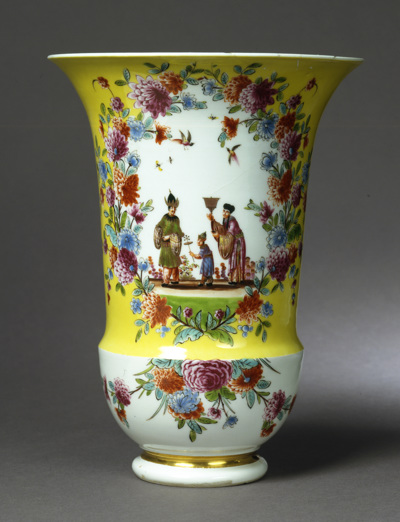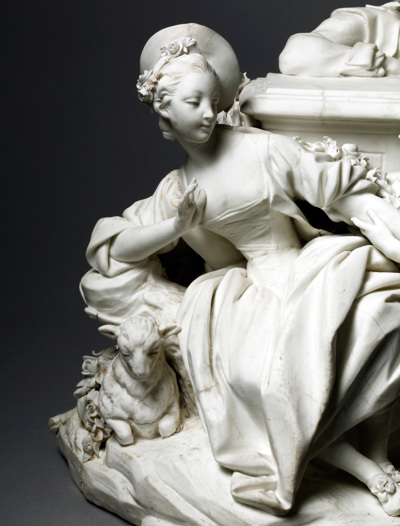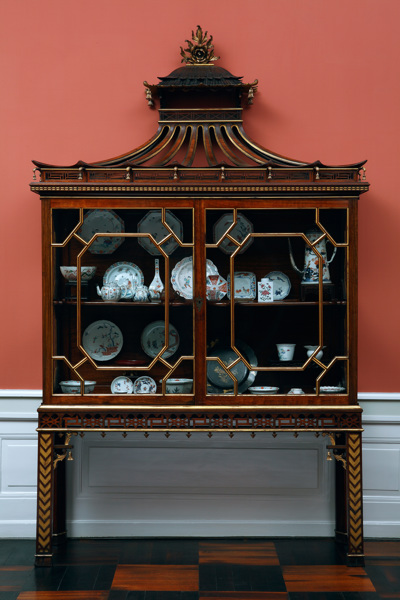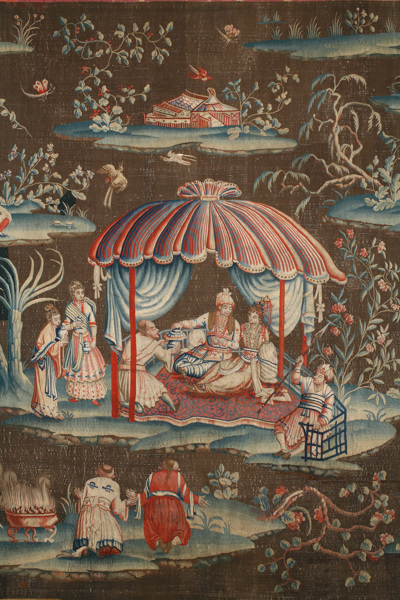Meissenporcelæn

Det hvide Guld. Europas første porcelæn
I 1709 lykkedes det for alkymisten J.F. Böttger i Dresden at fremstille ægte porcelæn ved at anvende porcelænsler (kaolin). På foranledning af August den Stærke af Sachsen, en af verdens største porcelænssamlere nogensinde, anlagdes året efter Europas første, endnu eksisterende porcelænsfabrik i den lille by Meissen nord for Dresden.
Et forstadie før det egentlige porcelæn var Böttger-stentøjet. Det var en hårdtbrændt, brun stentøjsmasse, i hvis matte eller højglanspolerede overflade man kunne slibe dekorationer. Fra 1720 lededes fabrikkens malerværksted af J.G. Höroldt.
Der fremstilledes nu en række originale og charmerende porcelænsdekorationer i brogede farver og forgyldning, bl.a. kineserier – de såkaldte Höroldt-kinesere. De små, genreagtige motiver i deres kniplingslignende indramninger var udtænkt med stor opfindsomhed, og der forekommer meget få gentagelser.
En anden, indbringende side af fabrikkens produktion var kopier efter det kostbare japanske eksport-porcelæn, produceret til det europæiske marked. Ud fra de ægte eksemplarer i August den Stærkes samling lykkedes det hurtigt i Meissen at fremstille porcelæn i en kvalitet, der med hensyn til motivtyper, farver og former til forveksling lignede de fjernøstlige originaler.


